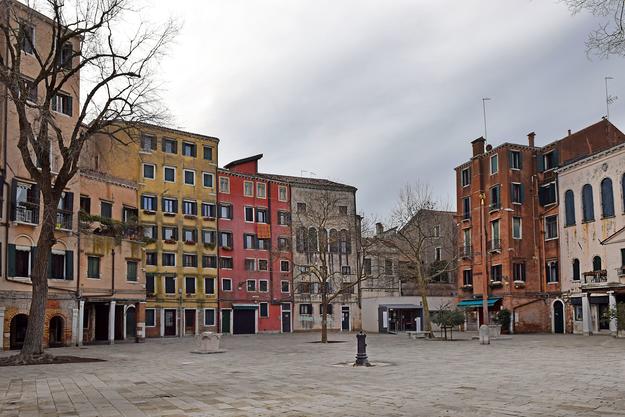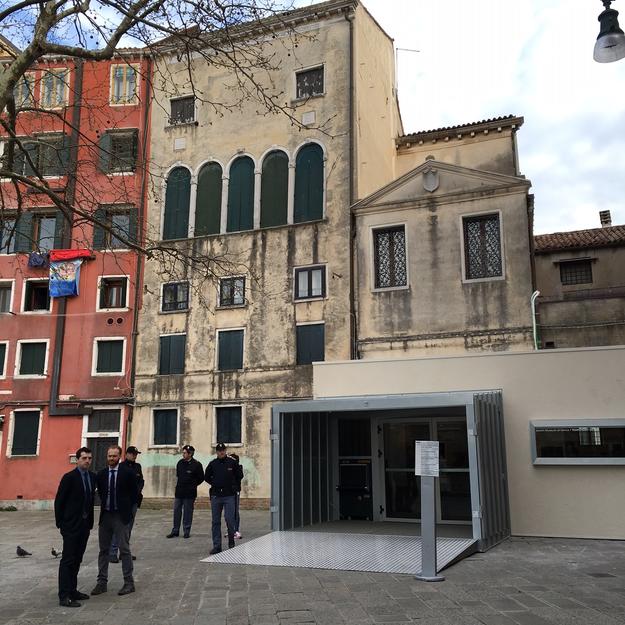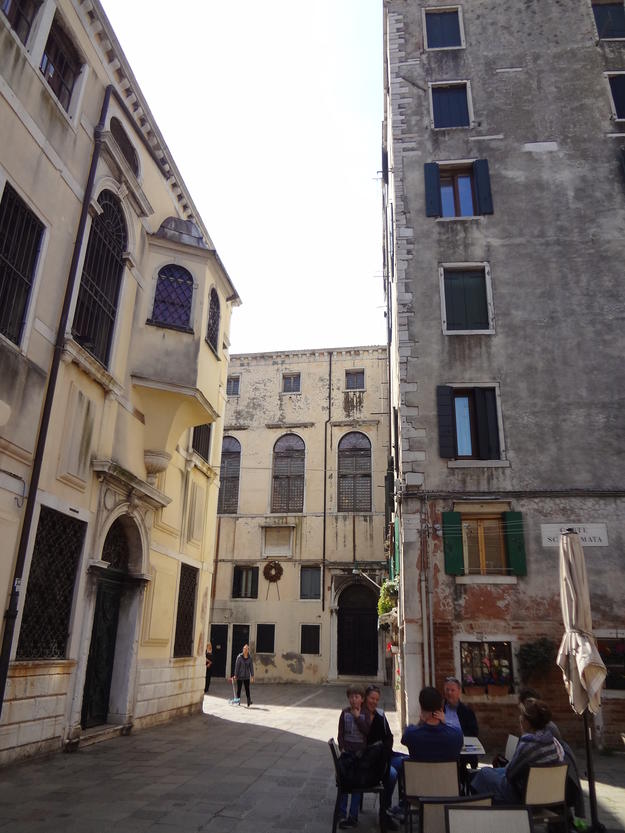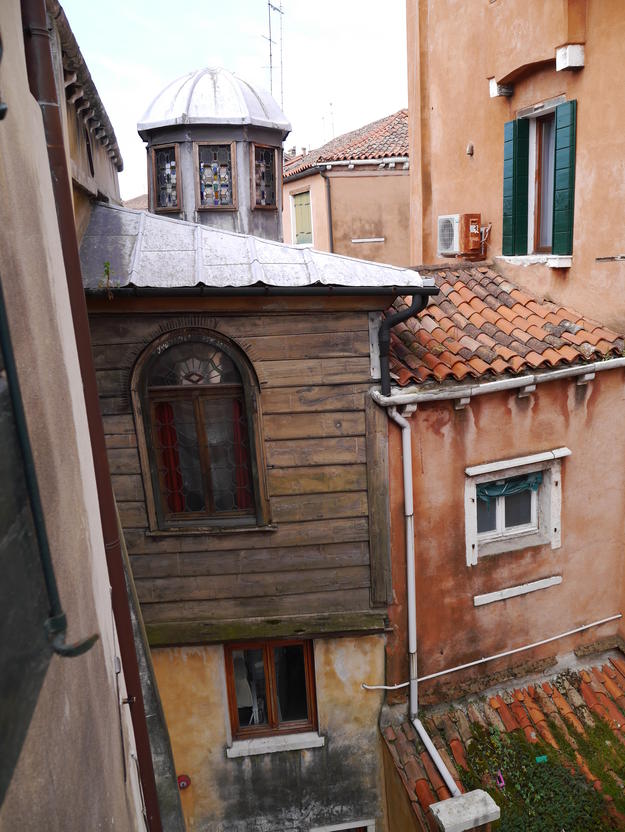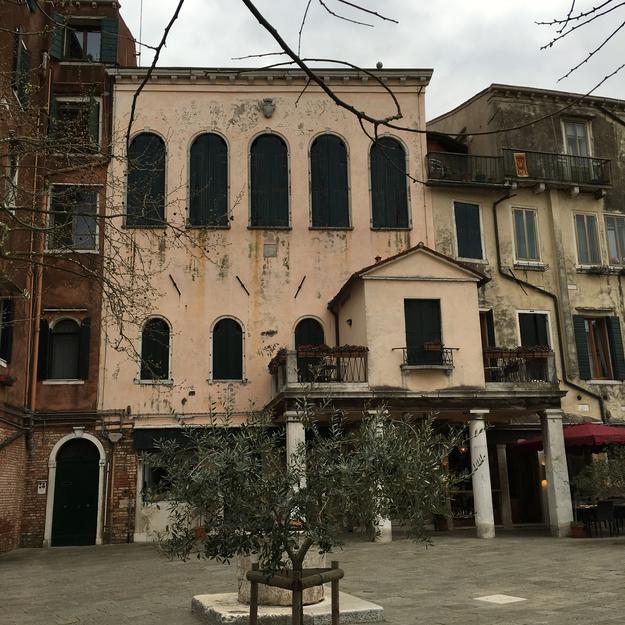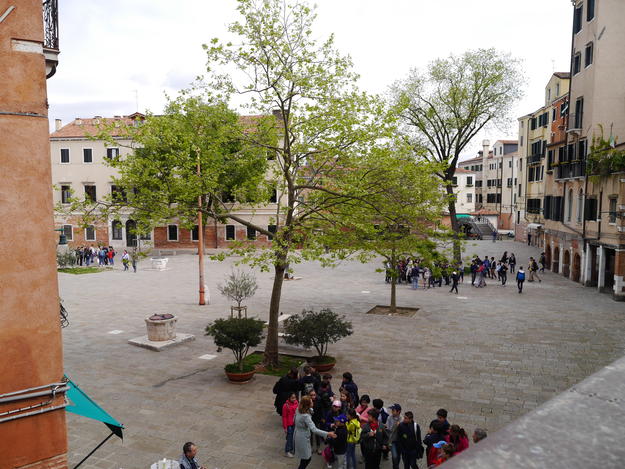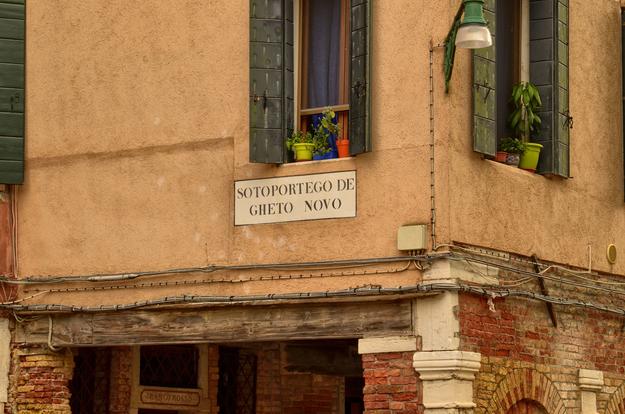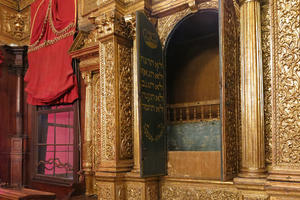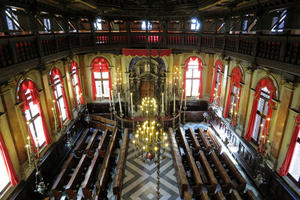The Venetian Ghetto
Background
The 500-year old Venetian Ghetto, widely considered the first Jewish Ghetto in Europe, contains five synagogues built between the early sixteenth century and mid-seventeenth century that represent the different ethnic groups that settled and flourished there. The sanctuaries were constructed on the top floors of existing buildings and have remained mostly intact for centuries.
The Jewish Museum of Venice was established in 1954 as a center of community life. The three synagogues located in the museum are now visited by many of the thousands of tourists that Venice attracts each year, but are still used for worship, for moments of quiet study, and ceremonies such as bar mitzvahs and weddings. The museum also displays artefacts, including Siddurim (prayer books), atarot (crowns), rimmonim (finials for the Sefer Torah), and mappot (Torah mantles), which have always belonged to the Venetian synagogues or families from the community. Many of these objects are still used at Jewish festivals, where they are passed through generations.
World Monuments Fund’s long history in the Venetian Ghetto supported several campaigns to stabilize and conserve the Schola Canton—in 1973, 1983, and more recently in 2014. In 2016 and 2017, WMF collaborated with local partners on a project to restore the historic windows in three of the synagogues: the Schola Canton, Schola Tedesca, and Schola Spagnola. The windows at these three synagogues revealed varying stages of deterioration, including cracking, missing panes, oxidation of decorative and structural metal elements, and damaged finishes. Loose frames and the resultant swelling and separation due to water filtration endangered the conservation of the interior architecture, finishes, and furniture of the centuries-old synagogues. An expert team repaired the windows, their frames, and the leaded glass. This work helped improve the appearance of the synagogues and protect the structures more fully from water damage, a key element to advancing the action plan for the full restoration of the synagogues.
Reviving the heart of the Ghetto
Today, notwithstanding great conservation efforts, the synagogues and the whole museum complex continue to deteriorate. The synagogues are in urgent need of restoration and the museum requires renovation to make it a modern exhibition space as well as an international cultural center. The Communità Ebraica Venezia and the Museo Ebraico have developed a plan that addresses these issues and have launched a fundraising campaign for a restoration project that tackles the general area of the ghetto. The project aims to improve the visitor experience of the ghetto by updating the museum’s design and circulation to provide a better interpretation of the history of the Jewish community and improved access to the Canton, Tedesca, and Italian Scholas within the museum.
The revitalized museum will recreate the communal experience of the past and translate it into new cultural programs. This experience of culture, daily life, and family histories will constitute an overall narrative to be presented through multimedia displays, traditional spaces, artefacts, and images. The total area included in the project is approximately 2,000 square meters and requires the acquisition of four adjacent apartments that, in addition to abutting and intersecting the museum premises, have maintained features typical of the poorest Jewish dwellings of the Venetian Ghetto.

